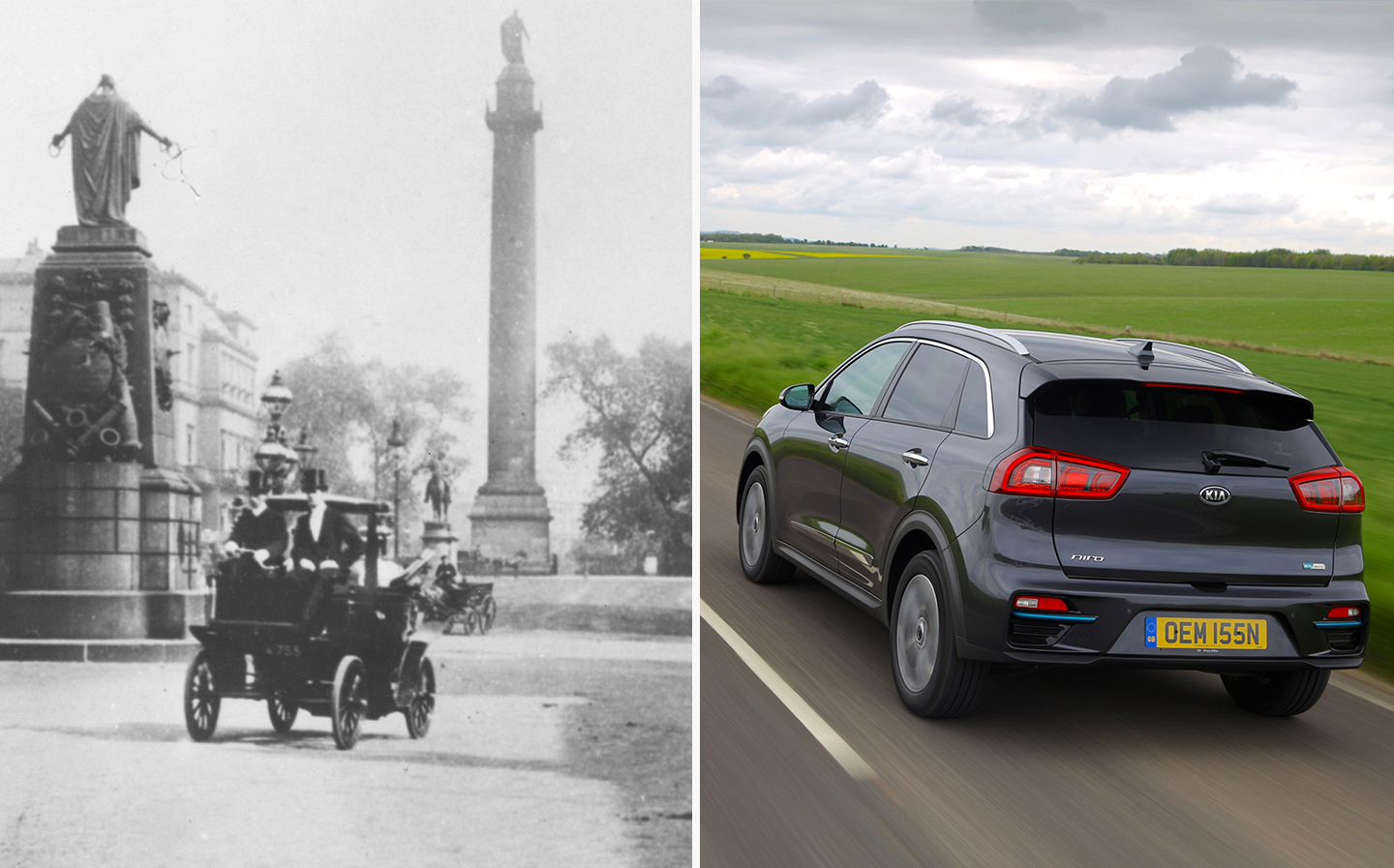The history of the electric car
Electric vehicles may be on the cusp of a breakthrough, but they spent decades in a cul-de-sac after being first off the line almost 200 years ago.
MARK Twain once said there was no such thing as a new idea. “We simply take a lot of old ideas and put them into a sort of mental kaleidoscope. We give them a turn and they make new and curious combinations … but they are the same old pieces of coloured glass,” he wrote. It’s a concept that could be applied to the development of the electric car.
To some drivers, the electric car might seem like a new advance but it can be traced to around 1832, when Robert Anderson, a Scottish inventor, created a crude electric carriage capable of carrying people.
Admittedly it was a little different from a modern Tesla, which can drive hundreds of miles on one charge and is capable of travelling on autopilot. The carriage used primary battery cells that would bring a whole new meaning to today’s “range anxiety”. And there were no creature comforts to speak of, not even a roof. But Anderson’s handiwork is widely considered the beginning of the journey towards the perfect electric car.
Journeys with the power to surprise: watch Mudlumps, the new short film from The Times in association with Kia, featuring the Kia e-Niro. It reminds us how new technology should be designed to enhance our lives rather than detract from it.
Bright sparks: the inventors of the electric car
Nearly two centuries later, the electric carriage has become a car — modern machines that would be unrecognisable to Anderson and those who followed. People such as Wilhelm Sinsteden, a German physicist, who invented the lead-acid battery; Gaston Planté, a French physicist, who came up with the first rechargeable battery, in 1859; and compatriot Camille Alphonse Faure, a chemist, who refined the capacity of lead-acid batteries and their suitability for mass manufacture.
Planté’s breakthrough, in particular, shaped the way drivers use an electric car. The ability to recharge the battery repeatedly, in a reasonable period of time, safely and without risk of fire, became a cornerstone of its development.
Electric carriages predated combustion-powered cars, and in some countries became the most popular form of transport after the horse and carriage. The picture below shows an electric brougham on Waterloo Place in London, circa 1913.
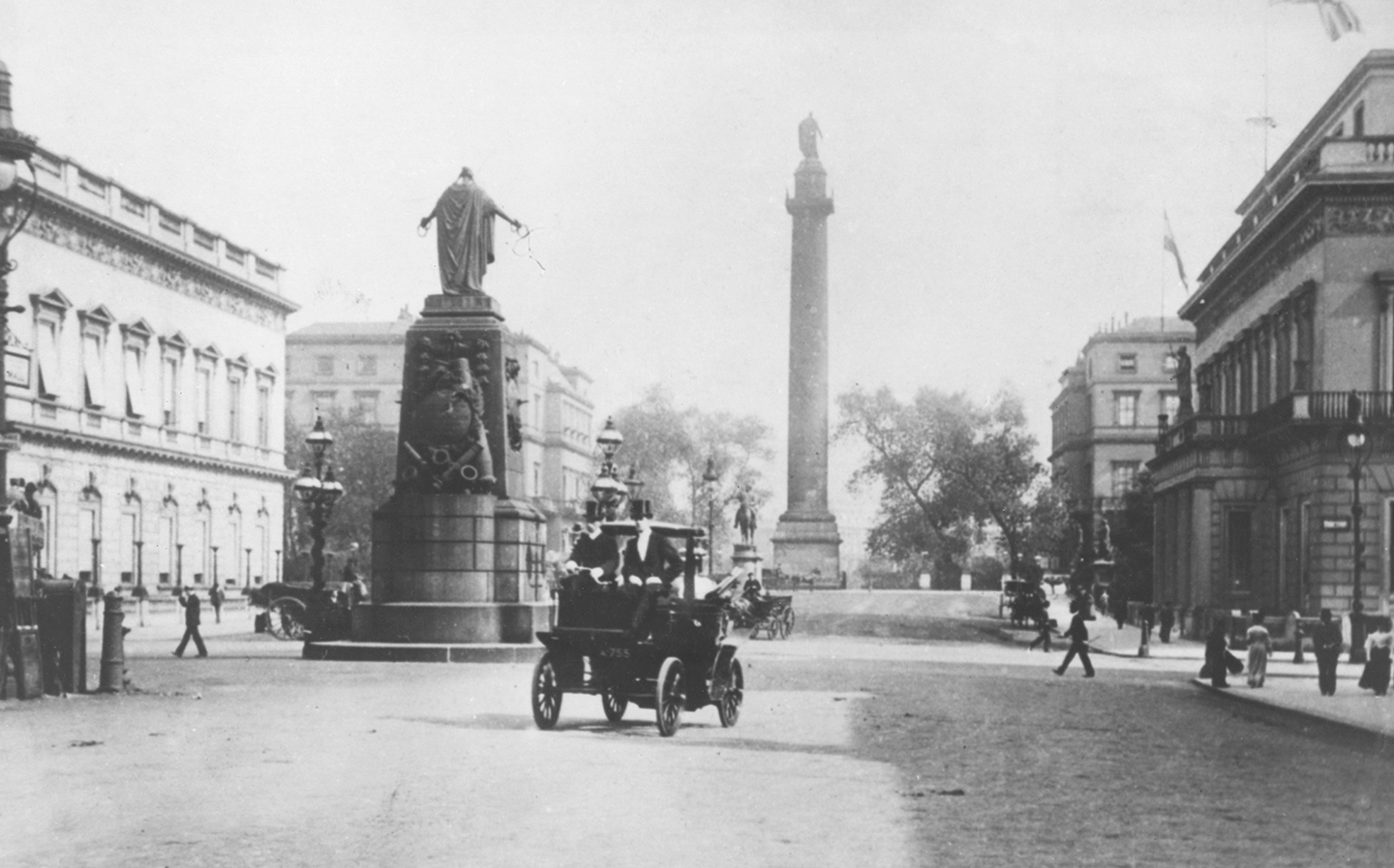
In America, during the early 1900s, manufacturers tried to broaden the appeal of electric cars to women by fitting them with the sort of upholstery found in a sitting room, vases and even makeup kits.
One advantage they had was that early versions of petrol-powered cars had starting handles, which required strength and timing to operate: get it wrong and a broken arm was possible as the handle whipped round once the engine fired.
Steam-powered cars, based on the engineering used in trains, were also fairly successful in the early days of motoring but took a while to fire up, were dirty to fuel and, it could be argued, dangerous.
A success was the Baker electric car of 1899. Even Thomas Edison, America’s greatest inventor, owned one — it was his first car. Edison (pictured below with his car) also designed the nickel-iron batteries used in some Baker electrics. It cost $850, equivalent to around $26,000 in today’s money, and sold well, with about 15,000 bought in New York alone.

There were public charging points across the Big Apple yet, impressively, the Baker could travel for up to 100 miles on a single charge. The American comedian and car enthusiast Jay Leno has one in his extensive collection — you can see it in this video. As he observes, the trouble with marketing electric cars to women was that men then didn’t want to be seen driving them.
At around the same time, and long before he formed his own car company, Ferdinand Porsche created the Lohner-Porsche Mixte, the world’s first hybrid car, which featured a petrol engine and battery-powered motor.
But the electric car industry suffered a devastating blow in 1908 when another name that would become famous worldwide entered the car market. Henry Ford’s Model T, the first mass-produced car, transformed the industry with its affordability and convenience. Some years later, Ford and Edison flirted with the idea of building an electric car together, but the proliferation of petrol — and petrol-filling stations — saw the idea sidelined. Petrol became cheap, plentiful and efficient.
The electric car lost its charge and by the 1930s, the idea had all but fizzled out.
The wilderness years
For the next five to six decades, the electric car was little more than a footnote in the car’s evolution. Despite publicity stemming from the battery-powered lunar rover during the moon landings, and fears raised by the oil crisis of the 1970s, there was little momentum for a return of the electric car, though there were several experiments.
In 1974, American Motors produced the DJ-5E, also known as the Electruck, a rear-wheel-drive electric delivery van. The US Postal Service commissioned more than 350, but with a range of about 30 miles it was soon found to be impractical.
Sebring-Vanguard also gave it its best shot, with the CitiCar. The two-seat, wedge-shaped runaround became America’s best-selling electric car, but that wasn’t saying much. By the end of its life, only 4,400 had been built.
Zagato, one of Italy’s most famous automotive styling houses, with credits such as the Aston Martin DB4 GT and Alfa Romeo Giulia TZ-2 to its name, produced the Zele. The box-on-wheels microcar bore little resemblance to Zagato’s other, beautiful creations. The only shared trait was that it was one of the rarest cars on the road.
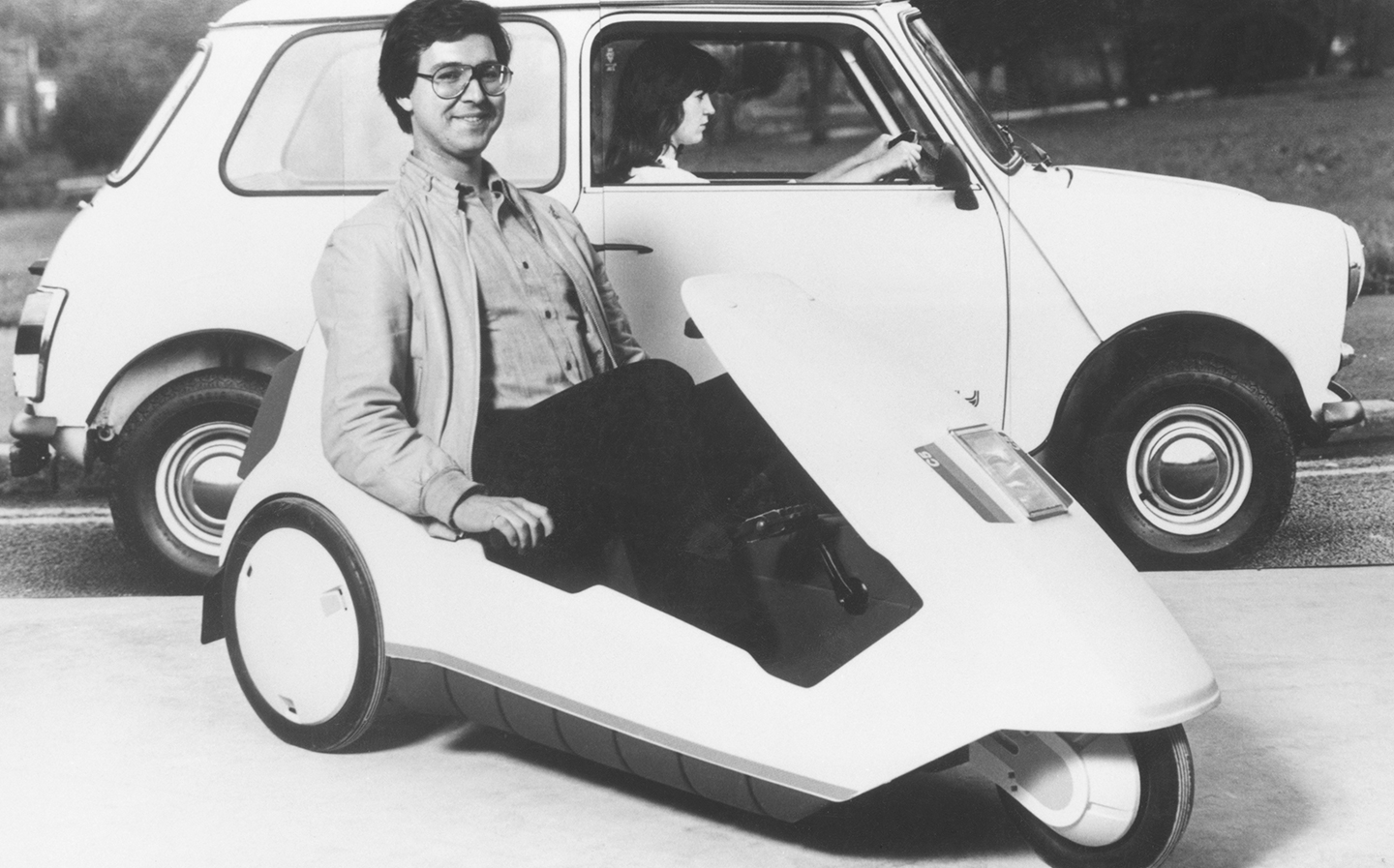
In the UK, one man’s vision of the future turned out to be — some would argue — ahead of its time. Clive Sinclair released the Sinclair C5 (above) in 1985, and saw it as an alternative to a car or bicycle, but it didn’t appeal to either drivers or riders. With little protection from the weather or cars and lorries, the C5 was not a sales success.
By the 1990s, however, air-quality legislation in parts of America, particularly California, began to focus the attention of car companies on the role of electric vehicles in reducing exhaust emissions.
The Pivco PIV2 prototype made its debut at the 1994 Lillehammer winter Olympic Games. (You might have caught sight of it in the Netflix black comedy, Lilyhammer.)
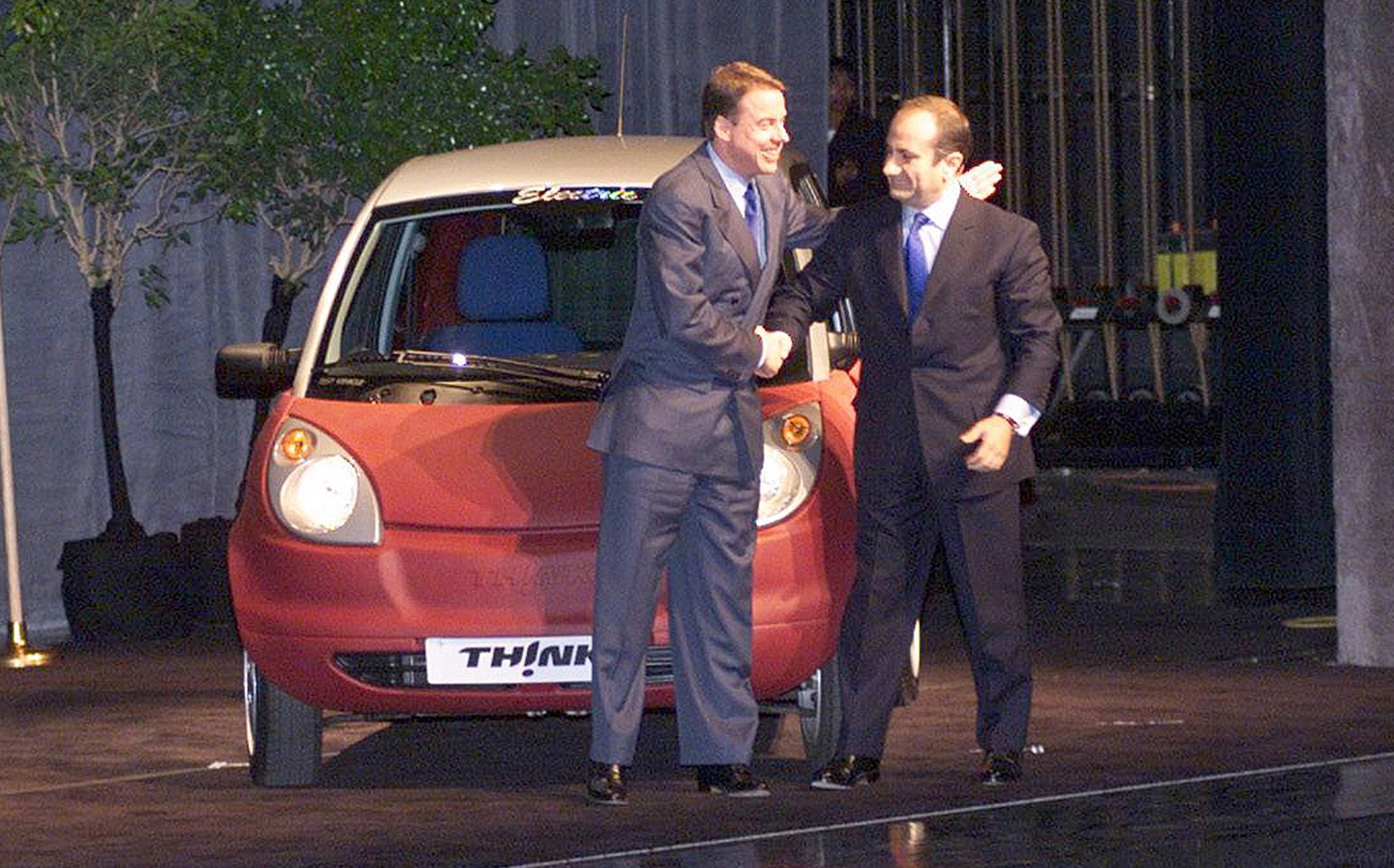
The work of a Norwegian company, the two-seat city car packed in clever engineering — clever enough for Ford to take a stake in the company and relaunch it as the Th!nk City (the picture above shows Ford’s president and CEO Jacques Nasser and chairman William Clay Ford, Jr. introducing the car at a Ford shareholders meeting in 1999). But the business faltered and Ford sold up in 2003, though production of the Th!nk City stumbled on under Indian and then Norwegian ownership until 2011.
In 1996, the world’s largest car company produced its own version of the electric car. General Motors released the EV1 to satisfy sales legislation introduced by the California Air Resources Board which meant car-makers had to offer a battery-powered model if they wanted to sell vehicles in California.
The EV1 enjoyed widespread acclaim but that did not stop GM collecting the leased vehicles and sending most of them to the great scrapheap in the sky, sparking a controversy about alleged pressure from “Big Oil” and other vehicle manufacturers — explored in the documentary, Who Killed The Electric Car? — that rages on to this day.
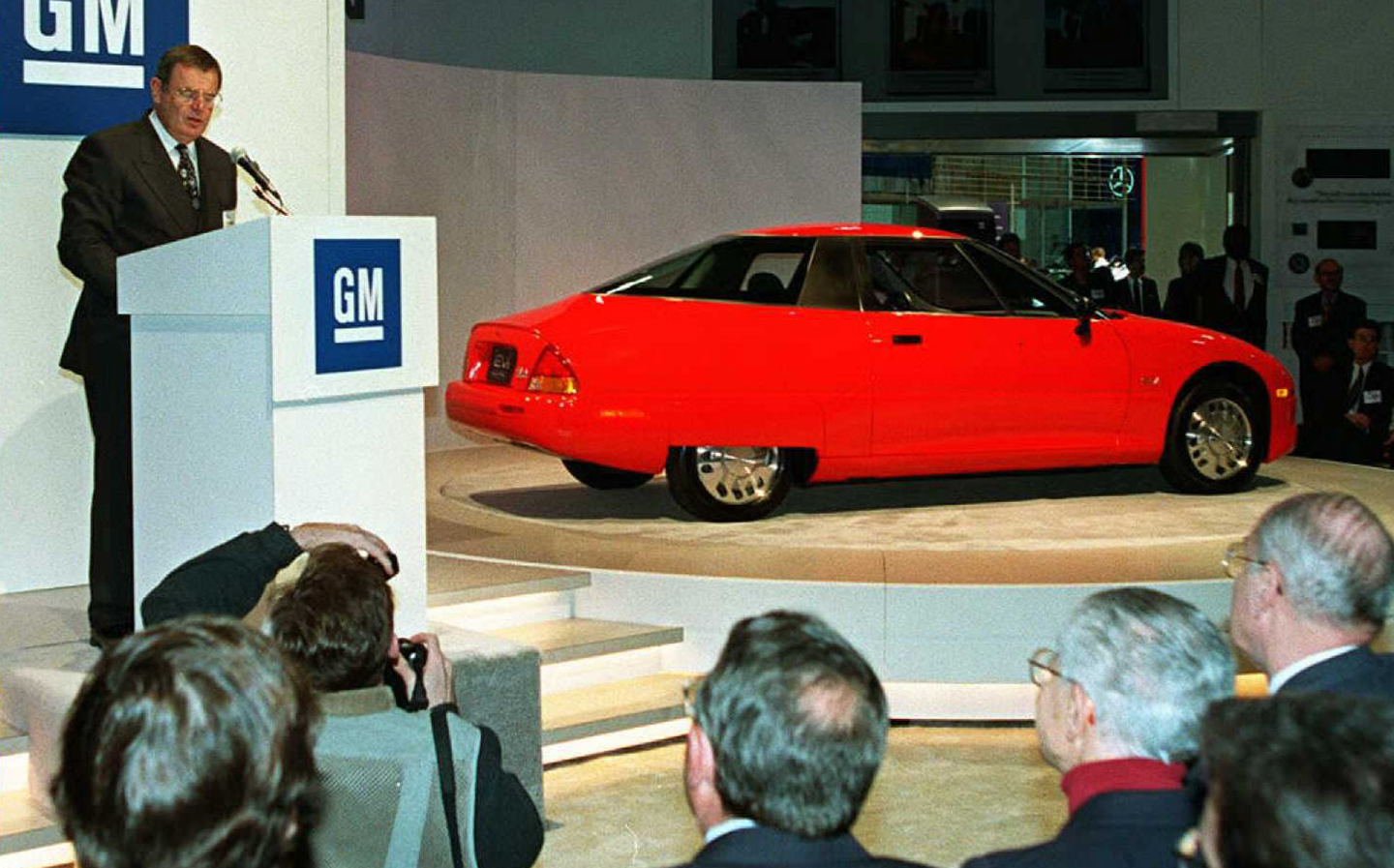
It would take Japanese manufacturers to repopularise electrification. In 1997, Toyota began production of the Prius, selling it worldwide from 2000. Honda’s J-VX concept car entered production in 1999 under the Insight name. The Prius became a phenomenon and marked a turning point in the acceptance of hybrid petrol-electric cars.
The new golden age of electric cars
There had been niche electric cars before, but when Tesla introduced the £87,000 Roadster in 2008 it sent a warning shot across the bows of the industry, though there was controversy when the BBC’s Top Gear programme claimed it had run out of power while being tested.
The South African-born entrepreneur Elon Musk (pictured below showing Arnold Schwarzenegger around the Roadster) had used part of his fortune from selling his PayPal stake to launch Tesla after sensing an opportunity to disrupt one of the biggest industries in the world.
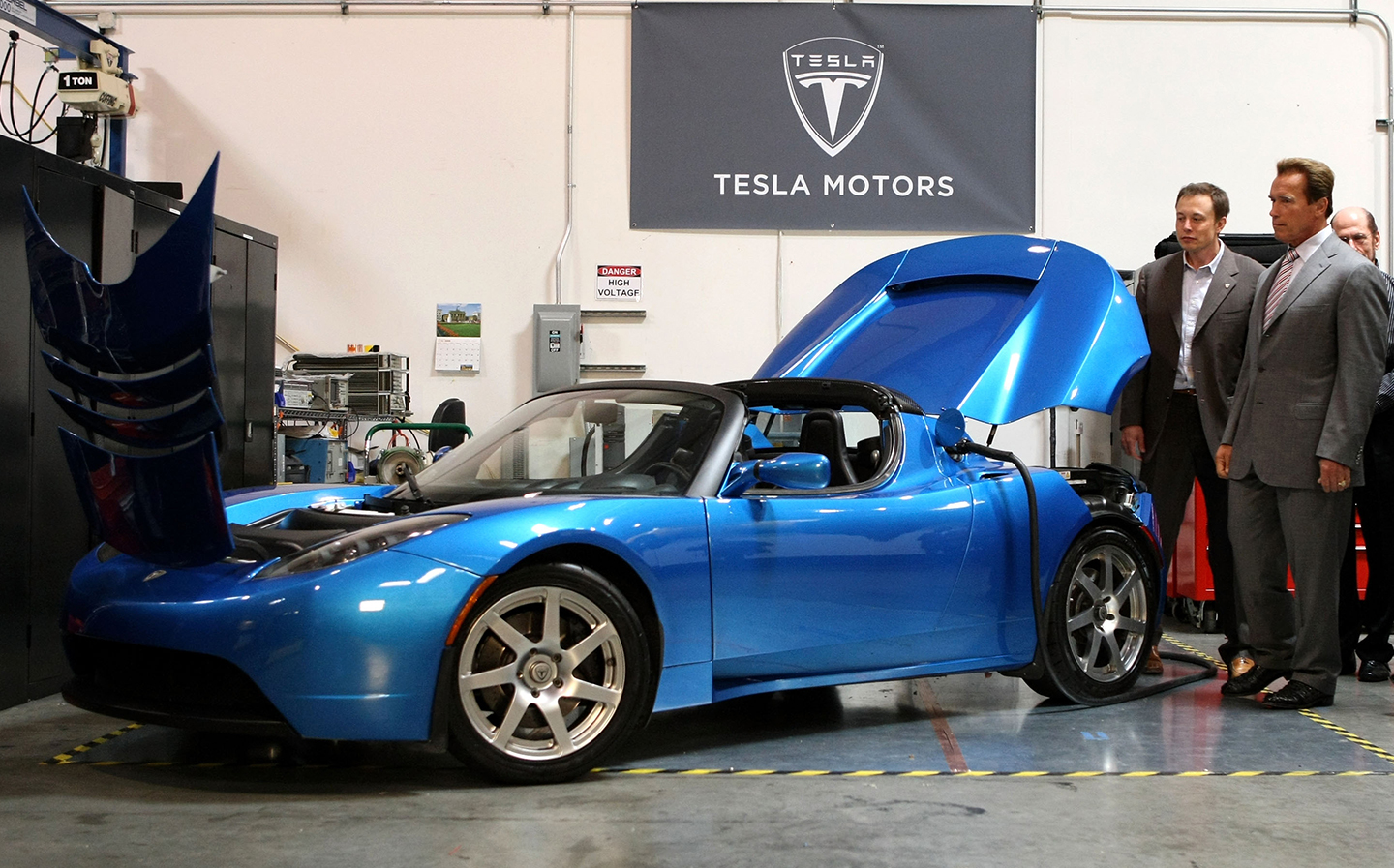
In 2010, Nissan followed with the Leaf. It was, arguably, the first purely electric car to break into the mainstream, bringing five-door hatchback practicality, an affordable £23,350 starting price (after the plug-in car grant) and a driving range that stretched for 100 miles between charges. It was a good effort, but was overshadowed by what followed in 2012.
Tesla’s first purpose-designed, long-range electric car was the Model S. It proved a success on many levels. It was highly desirable, the battery was big enough for up to 300 miles between charges, and it was packed with tech. Despite a launch price of about £50,000 it outsold luxury cars from Audi, BMW and Mercedes in America and even Europe.
The same year, the Renault Zoe arrived, offering more value for money, and a year later, BMW’s i3 went on sale, bringing innovative engineering that included a light carbon-fibre reinforced body. In 2014, Kia launched one of the first crossovers to feature electric power, the Soul EV (below), the first of a range of electrified models to come from the South Korean car-maker.
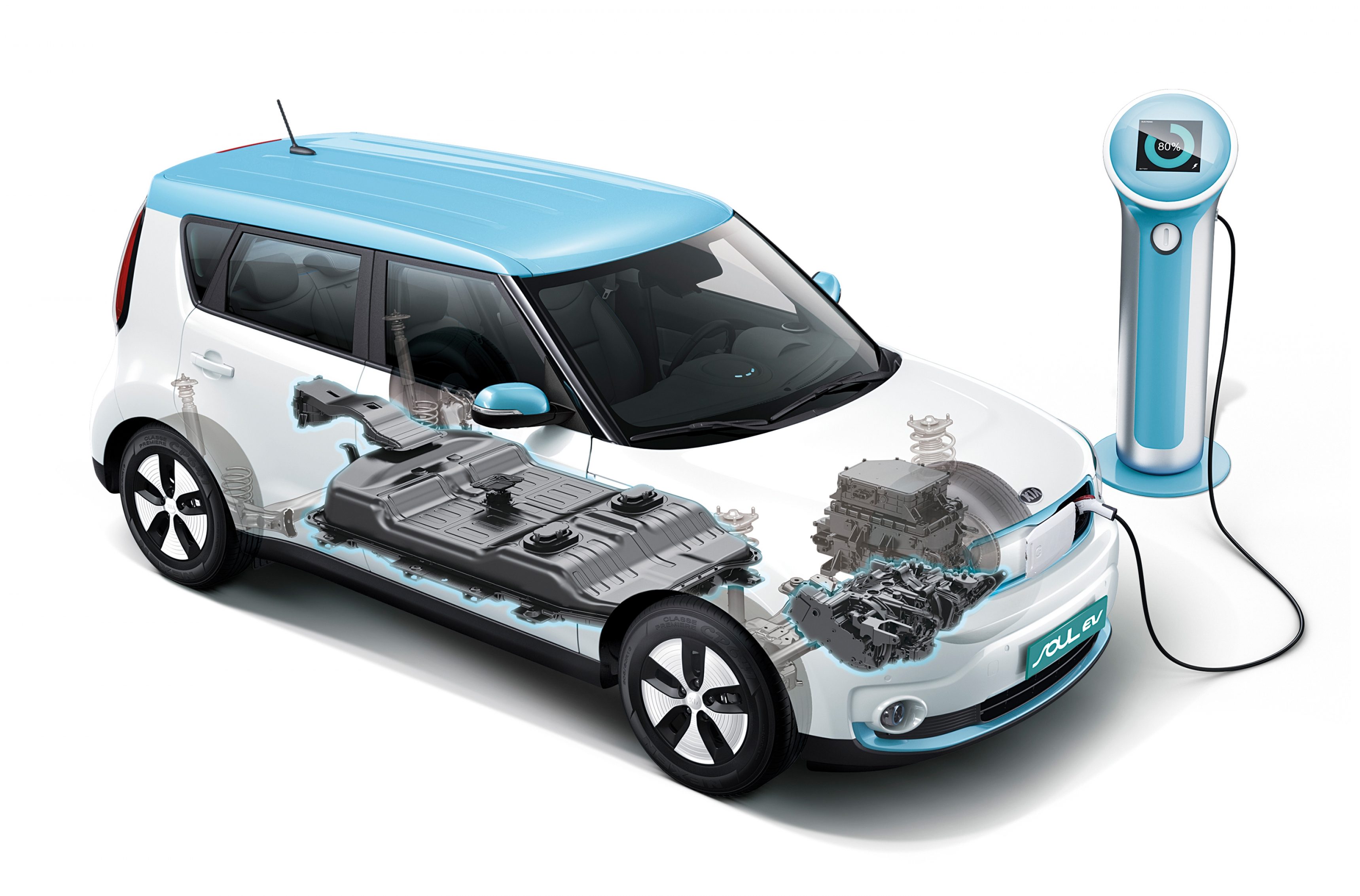
Last year Jaguar stole a lead on the German manufacturers, delivering its I-Pace to showrooms almost a year before Audi, BMW and Mercedes launched comparable models. It was an impressive car, capable of up to 292 miles on a charge. But then it should have been, given that it costs close to £65,000.
Arguably as significant that same year was Kia’s e-Niro. For nearly half the price of the Jaguar, the e-Niro offered family car buyers a crossover capable of more than 280 miles on a charge, and — as we found during a drive along the Jurassic Coast — could travel as far as 337 miles without too much trouble. Kia’s biggest problem has been producing enough of them to meet unexpectedly high global demand.
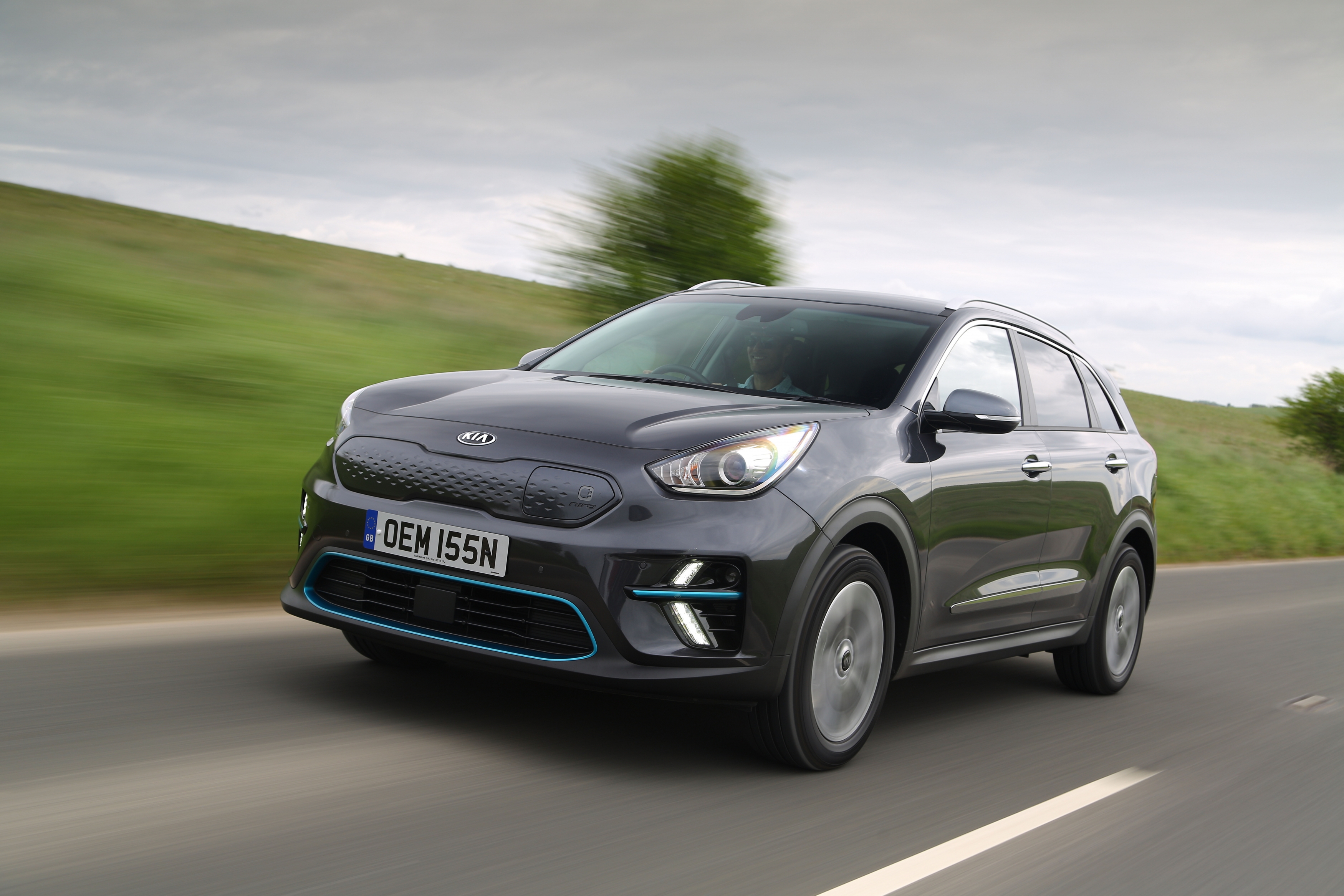
By 2040, every new car sold in Britain will need to be an “ultra low emission” vehicle, under government plans to meet emissions targets. With dozens of new models coming to a showroom near you, and the infrastructure being expanded and improved by the day, the electric car is well and truly back on the road. Quiet, surprisingly powerful, free from exhaust emissions and pleasingly affordable to run, this time they’re here to stay.
Until infrastructure for hydrogen-fuelled electric cars is perfected, perhaps. But that’s another story; and another idea that’s not new.
For more information about the Kia e-Niro, visit the Kia UK website.
Images: Getty / Kia


